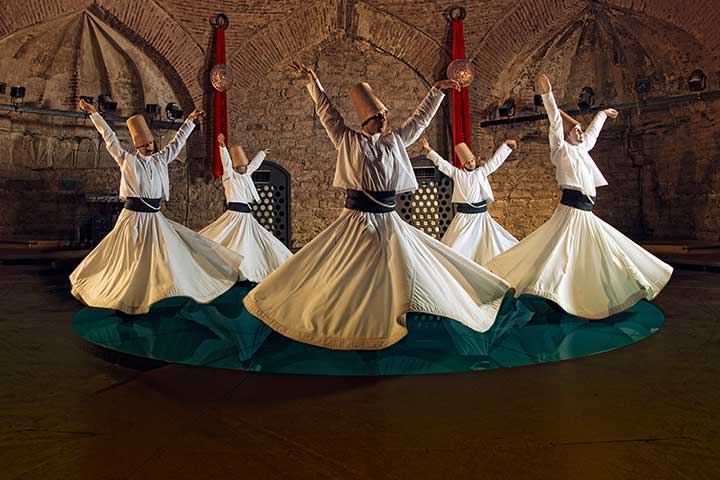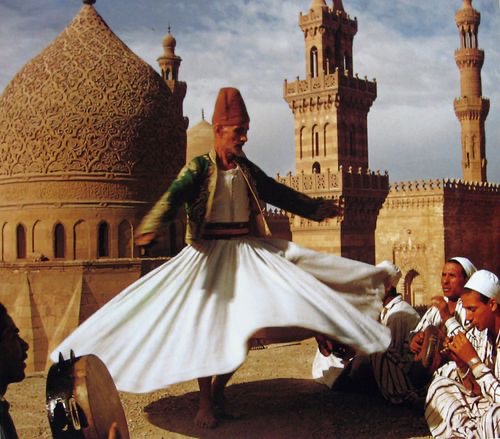In the realm of spiritual practices, few are as captivating and profound as the Sema, the mystical dance of the Whirling Dervishes. Originating from the Sufi tradition and inspired by the teachings of the 13th-century poet and philosopher Rumi, Sema is a sacred ritual that transcends the boundaries of culture and religion.
Sema, often referred to as the “Whirling Dance” or “Dance of the Whirling Dervishes,” finds its roots in the practices of the Mevlevi Order of Sufism. Founded by Rumi’s followers, this mystical order sought to achieve a state of spiritual enlightenment and union with the divine through the ritualistic performance of Sema.

At the heart of Sema lies profound symbolism. The spinning motion of the dervishes represents the Earth’s rotation and the seekers’ journey toward spiritual awakening. Dervishes wear white robes symbolizing purity and spiritual rebirth. The black cloak represents the ego’s tomb, symbolizing detachment from worldly desires. The conical hat signifies the tombstone of the ego and the spiritual journey towards enlightenment.
The Mevlevi Order, founded by Rumi’s son, Sultan Walad, continues to practice Sema in Türkiye. The annual performances in Konya, Rumi’s hometown, draw visitors from all over the world to witness this mesmerizing ritual. The accompanying music, known as “Sufi music,” includes the hauntingly beautiful sounds of ney (flute), daf (drum), and vocal chants, which elevate the spiritual experience of Sema and add to its enchantment. Sema has transcended its historical and religious origins and has found resonance with modern artists and performers. Contemporary interpretations of Sema can be seen in various dance forms and artistic expressions worldwide.

Sema is not just a physical dance but a profound spiritual journey. Participants aim to attain a state of “fana,” or annihilation of the ego, and “baqa,” or subsistence in God. It serves as a profound meditation technique, allowing practitioners to connect with the divine. The global appeal of Sema has led to cross-cultural exchanges and collaborations, making it a symbol of Türkiye’s rich cultural heritage and spiritual traditions, attracting tourists and artists alike. Sema has inspired numerous poets, writers, and artists, including Rumi himself, who often spoke of the divine dance in his poetry. Its influence can be seen in various forms of creative expression across the world. Moreover, Sema promotes the values of love, tolerance, and unity, teaching that all humans are connected by their shared spiritual journey, regardless of their religious or cultural backgrounds.
Sema is a timeless and profound practice that has left an indelible mark on the world of spirituality, culture, and art. Its mesmerizing dance, rich symbolism, and spiritual significance continue to inspire and unite people from diverse backgrounds. As we explore the history and impact of Sema, we are reminded of the enduring power of spiritual practices to transcend boundaries and foster a deeper understanding of our shared human experience.

